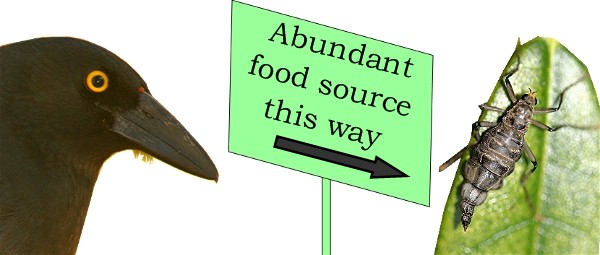Or rather insects, and no birds, as yet. I have long since given up the
expectation of discovering a hitherto unknown form of insect, but I
constantly come across specimens that might seem to qualify for that
distinction to someone more naive. About 3 weeks ago there was an
emergence of large moths, for which Michael Lenz kindlly referred me to the
genus Abantiades, and the website does suggest that they might indeed have
been of the species latipennis, at least to the untutored eye. They came
out of the ground in those thumb-size cocoons, brownish-yellow and ringed
with dark bands. Birds love them. I thought that that emergence was over,
but 2 nights ago at the same place on the reserve the staffy-cross flushed
an even bigger moth specimen fluttering on the ground, but whether a
different species or they are getting bigger as the season wears on, I
cannot say. Well this morning it was all happening in the garden. Lots of
crawling things of a variety I have not seen before. Various sizes but some
were over 2cms long. They looked fat and juicy and just the thing for birds
suffering from insect-deprivation in the current dry, but I have not yet
seen even the normally tucker-aware currawong club take any interest. A
pity, because I dont like the look of them and biological control is always
the best option, I say. As to what these are I would be grateful for any
suggestions based on the below illustration. The best I can do from the
books is possibly the larval stage of a hemerobiid. The body is rounded
along its length, not flat.
Geoffrey Dabb
email :
ph/fax : 02 6295 3449
Attachment:

*******************************************************************************************************
This is the email announcement and discussion list of the Canberra
Ornithologists Group.
List-Post: <>
List-Help: <>
List-Unsubscribe: <>
List-Subscribe: <>
List archive: <http://bioacoustics.cse.unsw.edu.au/archives/html/canberrabirds>
List manager: David McDonald, phone (02) 6231 8904; email
<>
|

